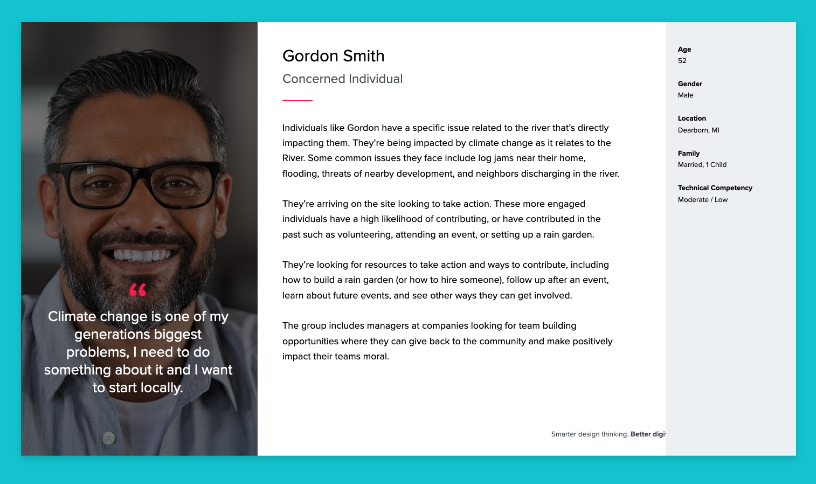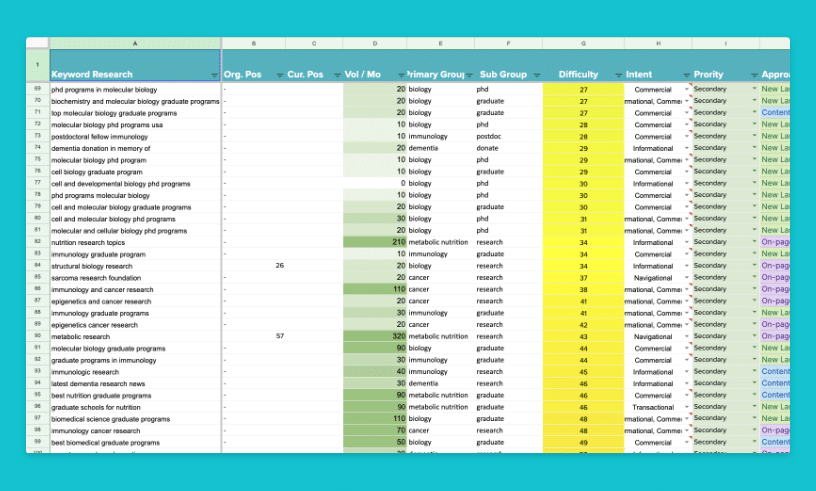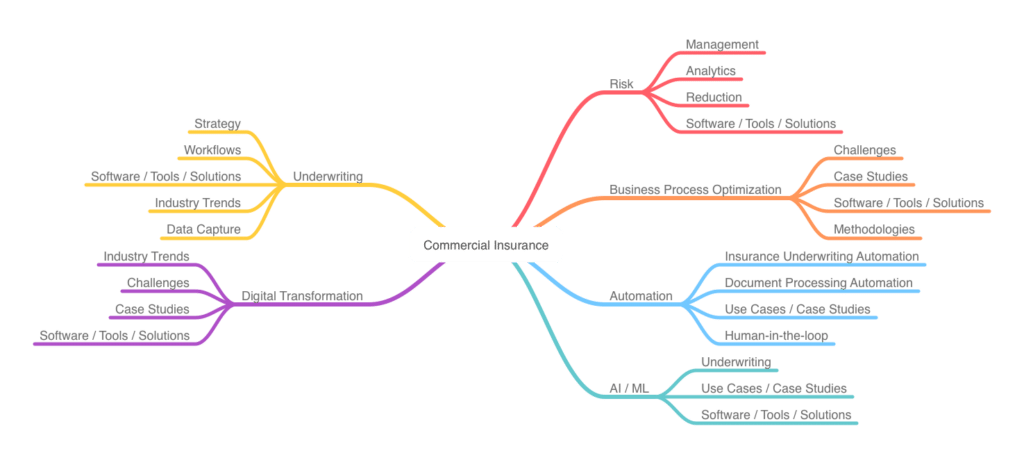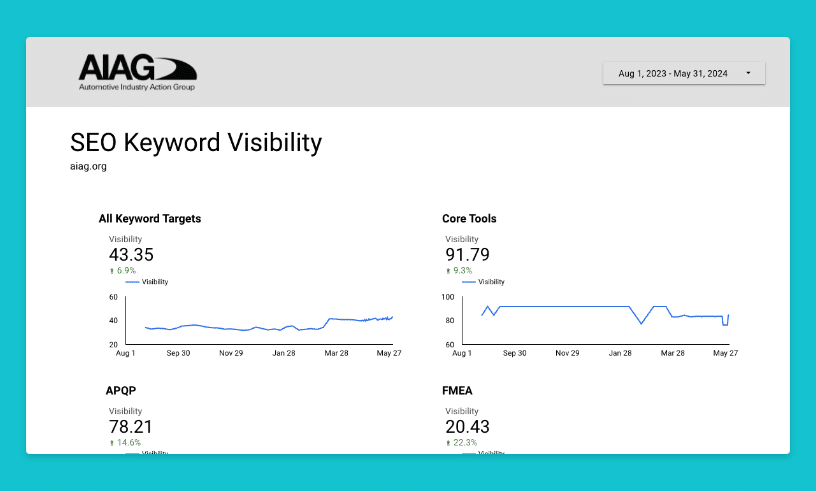Advanced SEO Tactics for B2B Technology Companies

A carefully planned and executed search engine optimization campaign is critical to most technology businesses’ overall digital marketing strategy. Technology companies, in particular, require a different approach to SEO than many others. They often face a highly technical target audience, prospects who thoroughly research possible solutions before making a buying decision, multiple stakeholders in the buying process, and long sales cycles with many touchpoints.
These factors make SEO and content marketing particularly effective in reaching specific, informed audiences, establishing industry authority, and building trust that fosters long-term customer relationships, contributing to its 275% average ROI.
Modern SEO can be challenging; you can’t optimize websites by injecting keywords or pumping out generic blog posts. Search engines have become adept at connecting users to the most relevant, highest-quality content on the web. You need a more advanced approach to drive organic traffic, capture buyers early in their research process, and increase sales.
An advanced SEO approach requires a solid technical foundation, a deep understanding of your target audience, highly relevant, high-quality content, and strong domain authority. Let’s examine each aspect in more detail.
Solid Technical Foundation for Your Website
If Google struggles to crawl, index, and understand your content, your search visibility will suffer greatly. Ensuring your website has a solid technical foundation is the first step in any effective SEO campaign; after all, searchers can’t find your content, regardless of how good it is, if Google won’t index it.
The most fundamental technical requirements include:
Minimal Crawling Issues
Search engines must access and crawl your content to appear in search results, which crawling issues prevent. Common crawling issues include:
- Orphaned content
- Broken internal links
- Pages blocked from search engines
- Pages with errors
- Improper redirects
- Incorrect canonical tags
- Lack of or inaccurate sitemap.xml file
- Overblocking from Robots.txt
Any of these issues can prevent crawlers from accessing or prioritizing your valuable content. You must have a solid technical foundation before you worry about optimizing any existing or creating new content.
Internal Linking Structure
Content multiple levels deep within your site might not get crawled as quickly, often, or at all. Internal links help search engines understand the hierarchy and importance of your content, improving users’ navigation. Important content should have low link depth and a high volume of internal links.
Load Times
Extremely long load times slow the crawlers and, in some cases, cause them to abort the crawl altogether. If your website is on a slow server or has a bloated CMS or theme, it could prevent all of your content from being indexed.
Structured Markup / Schema.org
Using schema.org structured markup makes it easier for search engines to understand your content. To improve content relevance, take advantage of any opportunity to incorporate structured markup.
Thin and Duplicate Content
Including thin content pages like tag archives, PPC landing pages, or other pages with little to no valuable content eats up your crawl budget. It demonstrates to search engines that your website has a high level of unavailable pages, impacting how many pages crawlers access and how much value your site has.
Similarly, multiple pages sharing the same content tell search engines that they lack unique content, devaluing the pages.
Audience Analysis
Conducting a thorough audience analysis can help your business create quality, relevant content that your target audience is searching for. This process begins by identifying who you are trying to reach, learning about their research behaviors, and how they engage with content online. Many technology companies have multiple audience segments they need to target. When we analyzed ETA’s target audience, we segmented them into users, managers, and leadership. Each segment had unique questions they wanted answered, topics they researched, and other stages they’d interact with ETA in the buyer’s journey.
For each segment, you need to determine:
- Which stage of the buyer’s journey—awareness, consideration, or decision—you want to engage them
- The problems they are trying to solve and how they articulate them
- The challenges they’re facing
- What they care about
- How they make decisions
- What they know and don’t know about your offering

Answering these questions will guide your decisions about which keywords to prioritize and how to structure your content so that it’s most helpful. By aligning your SEO strategy with these insights, you can create content that resonates deeply, addresses their specific needs, and effectively guides them through their journey.
Strategic Keyword Targets
If you’re involved in your company’s marketing function, you understand the importance of targeting the right keywords. The right keywords are highly relevant, have significant search volume (relative to your business and industry), and are within competitive reach for ranking. Your audience analysis will identify the words they use to describe what they’re looking for and the intent behind their searches (informational, commercial, transactional, navigational.)

Many tech companies benefit from long-tail keyword targets. Short-tail keywords are broad, 1 – 3 word searches like “modeling software” or “automotive engineering software.” They typically have high search volume, high competition, and lower relevance. Long-tail keywords are 4+ words and more specific, decreasing the volume and competition while increasing the relevance. In many cases, targeting multiple long-tail keywords can bring more qualified traffic than a given short-tail keyword.
Segment your keywords into primary, secondary, and tertiary. Then, identify what type of content to create for each keyword. Articles and blog posts are often valuable for informational searches, whereas service and product pages are effective for commercial or transactional searches.
Domain Authority
Domain authority represents the level of trust your website has compared to your competitors. Those with a higher authority generally rank more highly on search engine result pages. While Google has officially said “domain authority” doesn’t exist, they likely mean in the specific, simplified way that SEO tools like SEMRush, AHrefs, and MOZ measure it. These tools rank your website authority from 1 to 100, determined by various factors, the largest of which is the number of high authority links from other websites.
Domain authority is among the most difficult influencing factors, as search engines can identify unnatural link patterns. Buying links, link spamming, link exchanges, and other ways of “gaming” your way to more links won’t improve your domain authority and can even hurt it.
If your website has low domain authority, you must develop a strategy to increase it. Natural methods include building out your social profiles and local listings, joining relevant business directories (BBB, chambers of commerce, industry organizations, etc.), publishing content on relevant, high-authority publications, online public relations, and identifying unlinked mentions of your business, to name a few.
You can be more proactive by creating “link magnets,” which are compelling content or tools that other sites will naturally want to link to, such as free tools, industry reports, articles with relevant statistics, and opportunities for guest blogging or features. Alternatively, you could look for broken links on relevant websites and replace them with updated links to your own content, providing a useful fix for the site owner.
If your technology business serves a specific niche, we’ve found creating valuable content for online trade publications can be particularly effective. You build brand awareness and subject matter expertise with your target audience and acquire highly relevant, high-authority backlinks. Finally, creating valuable content that relevant websites naturally link to is the most effective approach in our experience. By publishing high-quality content, we helped Insulgard acquire links from Wikipedia, Business Insider, and several industry-specific publications like Glass.com, Retrofit Magazine, and Starter Story.
On-Page Optimization
Search engines can understand the content on your site, and they claim you don’t need to alter your website to rank for relevant keywords. That said, maximizing the search visibility of your content involves ensuring every significant page and article is optimized to align with the relevant keywords you’re targeting. Start by ensuring your content uses the keywords your audience seeks, which you’ve identified during the keyword research phase.
The next step is to align the keywords you’ve identified to individual articles and pages. Ideally, you should target one important key phrase per piece of content. Modifications are OK; for example, “The Best Website Security Software” and “The Best Website Security Solutions” can be targeted on a single page. Once you’ve identified the target keywords for pages, you can address the following:
- Title Tags / Meta Descriptions: Craft descriptive, keyword-rich title tags and meta descriptions to improve click-through rates from search results pages.
- URLs: Ensure URLs are concise and include relevant keywords where possible.
- ALT Tags: Use descriptive ALT tags for images to improve accessibility and provide context for search engines.
- Headings: Structure your content with clear headings (H1, H2, etc.) that include target keywords and break up the text.
- Keyword Usage: Integrate keywords (primary targets and related terms) naturally within your content, avoiding overuse while maintaining relevance.
- Content-Length: Ensure the length of your content is consistent with the length of content currently ranking for your primary keyword target.
- Content Quality: Focus on creating higher quality, more engaging, and informative content than what sites currently rank for your primary keyword.
- Content Coverage: Cover various topics related to your expertise, providing a complete and authoritative resource.
- Reading Level: Adjust the reading level of your content to suit your target audience, ensuring it is accessible and easy to understand.
Topical Authority
Topical authority is an element of SEO that signifies the extent of your expertise in specific areas. It is similar to domain authority but has more to do with your trust in a particular area than your website’s overall quality and longevity. This strategy generally requires including substantial content surrounding the topics you aim to rank.

Topic clusters, which are collections of content revolving around a central theme, can help to improve your topical authority. Anchoring these pieces with a comprehensive, authoritative pillar article that cohesively covers the main topic can improve this strategy even more. Surrounding your pillar content with various sub-topics that dive into your expertise in even more detail can signal to search engines that your site is a rich and quality source of information about your niche specifically. This approach enhances your credibility and boosts your rankings within searches related to your offerings.
For example, provide software solutions to the commercial insurance industry. You might create topic clusters around risk, business process automation, business automation, artificial intelligence and machine learning, digital transformation, and underwriting. Each cluster will have subtopics with several articles within them.
Content Quality and User Experience
Ultimately, the goal for all search engines (beyond making money for shareholders) is to connect users with the best result for their query. If users don’t find what they’re looking for, they’ll use other tools, such as competing search engines, AI chatbots, and social media, to find the needed information. Further, if you have great content but a poor user experience, searchers are less likely to want to engage with it. By providing a better user experience, you can increase dwell time and lower bounce rates, which ultimately signals to search engines that your site should rank highly.
By providing the best content for a user’s search combined with exceptional user experience, you’ll have the best result for your target keyword and naturally attract more traffic.
To improve content quality, user experience, and the impact on SEO, consider the following strategies:
- Unique Insights: Offer fresh perspectives or new information that adds value and that users cannot get from competitors.
- Unique Approaches: Utilize various formats, such as comparisons, tutorials, and case studies, to cater to different preferences and learning styles.
- More Complete and Comprehensive Content: Ensure your articles cover all aspects of each topic to satisfy users and keep them coming back.
- Better User Experience: Design a site that is easy to navigate, highly legible, fast-loading, and has content that is easy to understand and engage with.
- Different Multimedia: Incorporate images, videos, infographics, and other interactive elements to complement written content and provide more helpful perspectives.
- Real-world Examples: Use case studies and examples from real-world scenarios to illustrate points and highlight real-world value.
- Cycle Between Highly Technical Content and Overview Content: Balance detailed information with general overviews to cater to all stages of the buyers journey.
Content Reach
The ultimate goal of SEO campaigns is to increase content reach through search engines, but there are additional ways to bring visitors to your website. Expanding your reach in other ways can signal to search engines that you provide valuable content to visitors and improve your reach even further.
There are countless ways to increase online traffic, from social media posts to digital ads. However, a few strategies are especially relevant to today’s tech companies. First, incorporating video content on platforms like YouTube, the second-largest search engine, can significantly boost visibility. Podcasts are another powerful medium, offering an auditory experience that can help you establish authority in your industry and extend your brand’s voice. Promoting content through social media, email newsletters, and online communities helps amplify your message and engage with broader audiences. Finally, consider investing in International SEO by localizing content and optimizing for languages and regions.
These tactics will increase brand awareness and can aid in acquiring authoritative backlinks as more people are exposed to your incredible content and want to share it.
Running SEO Sprints
SEO is not a one-and-done initiative. Your competitors continually work on their SEO; you must do the same. We’ve found that structuring campaigns into “Sprints” is the most effective approach. Running SEO sprints involves focusing on concentrated bursts of activity related to specific aspects of SEO, followed by analysis and strategy refinement. This can ultimately help you determine what works best for your particular site and goals, leading to improved information and results over time.

Sprints often include the following steps:
- Technical SEO: Address and fix technical elements like site speed, mobile responsiveness, and structured data implementation to address potential crawling issues.
- Content Development: Create or revise content to align with current SEO goals, focusing on quality, relevance, and keyword optimization.
- Link Building: Actively seek opportunities to acquire high-quality backlinks through guest posting, broken link replacement, and influencer collaborations.
- Analysis and Strategize: After making changes, analyze the impact on your site’s performance, identify what worked and what didn’t, and adjust your strategy accordingly.
- Repeat: Continuously cycle through these steps, improving your approach with each sprint to maximize SEO effectiveness.
The Right KPIs
Like all marketing channels, SEO is an investment, and leadership will want to know the ROI. Identifying the right metrics to track can be tricky for SEO in particular. Your first instinct might be to track target keyword rankings. While relevant, they don’t paint the whole picture. You can rank very high for keywords with little search volume; you can also rank high and not receive any clicks. Further, with personalized search, most users will see results that are different from those of your tracking tools.

In addition to tracking keyword rankings, we recommend measuring overall search traffic, search impressions, clicks from search, total ranking keywords, and conversions from search. These metrics paint a cohesive picture of your SEO campaign’s success. In terms of the toolset, free tools like Google Search Console and Google Analytics 4 will give you visibility into impressions, clicks, traffic, and conversions. Rank tracking tools like SEMRush, Ahrefs, and MOZ offer comprehensive insights into keyword rankings and how your content performs compared to similar sites.
Overall, tech companies must apply a multifaceted approach to SEO to succeed. From building a solid technical foundation to creating high-quality, relevant content, there are countless ways to improve online visibility, attract more organic traffic, and ultimately better serve their target audience. SEO strategies constantly evolve, so staying on top of trends and monitoring their progress can help them create a sustainable growth plan.